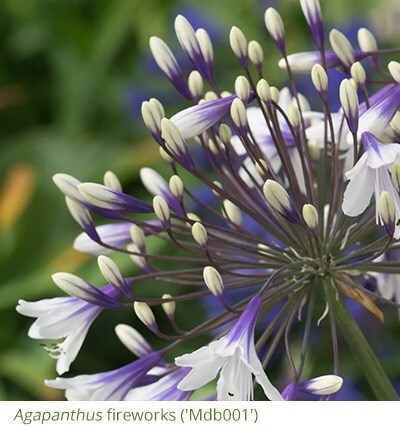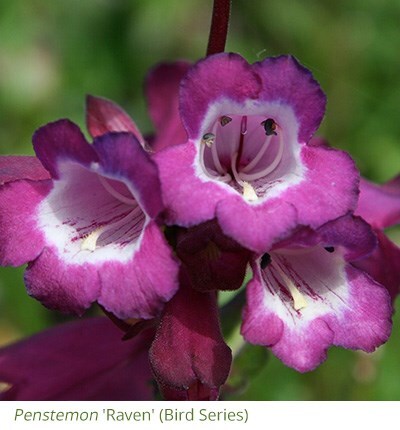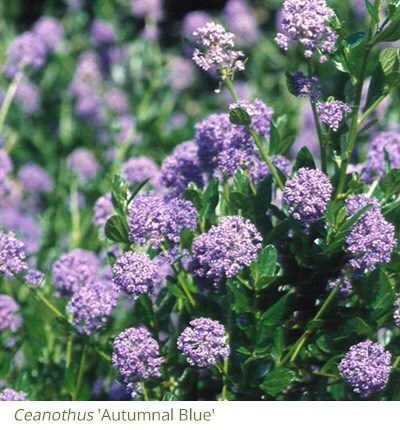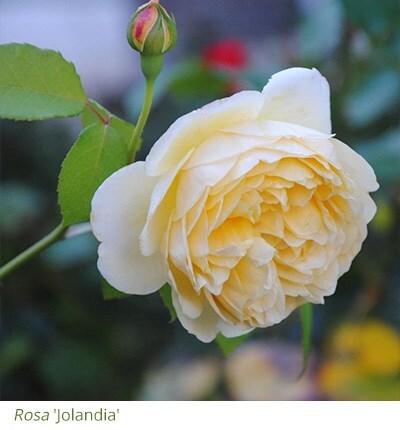|
Autumn lasts much longer these days and generally there’ll be another month or two before winter strikes so there’s plenty of time to enjoy the mellow month of October with its soft light and misty atmosphere. The colour palette softens now as plants begin to brown and fade, but any late asters, kniphofias or aconitums develop a jewel-box richness that’s unique to October. The heavy dews cling to cobwebs and early mornings, although a bit chilly, always have a touch of magic about them. Afternoons can be warm and balmy though - so it’s still possible to lose yourself in the garden for an afternoon in October and enjoy it. By November gardening’s often a grit your teeth affair. Necessary perhaps, but not enjoyable.
 Winter Hardiness Winter Hardiness
You can never quite predict how severe the weather will be in the months to come. In the absence of a crystal ball, there’s plenty of time to make contingency plans to help your plants to survive because there’s still some warmth in the sun and the soil. Hardiness is a complex issue in Britain, even though there’s not much variation in climate. When plants die overwinter, it’s often a wet rootball that finishes them off rather than severe cold, so improving drainage is vital.
All-Year Round Pots and Containers
There are several ways of helping potted plants survive. The first thing to do is begin to dry the pot out, so watering stops from now on as a signal to the plant that the growing season is over. If the pot is staying outside, stand it on pot feet from October to March so that any excess water is able to drain away from the roots. This helps enormously. Or, move your pot into the lea of the house, or another dry position. This will keep a lot of rainfall away from the plant. Under the greenhouse bench is often a good place too if the plant is small enough. If this isn’t an option, pots of agapanthus and lilies, for instance, can be laid on their sides to stop rainfall from soaking the roots. If you have something slightly tender in your pot, such as frost-hardy fuchsia or a salvia, wrap the entire pot in fleece or invest in a fleece jacket and put it in the warmest place you have.
 Tender Plants Tender Plants
Generally tender plants are best removed from their pots and discarded, because they can harbour vine weevil. However it is still possible to take some cuttings even now. Fill small seed trays or pots with grit sand. Look for new, healthy growth and remove any buds, trim under the leaf joint or node, remove or trim any over-large leaves and then plunge your cuttings of pelargoniums, salvias, penstemons or pinks etc, into the sand - submerging two thirds of the cuttings. Keep them cool and damp, but frost-free, and they will begin to root very slowly and will not be ready to pot up until next spring.
In very cold weather, cover the trays or pots with fleece. Many tender plants can survive a little frost if fleeced. If you’re putting them in a greenhouse place them in the shadiest part, because you want them kept cool. A warm day might dry them out if they’re in full sun.
If you have something slightly tender in the garden such as a gladioli, dierama, alstroemeria or melianthus, improve their chances of survival with a top dressing of coarse grit. It will act as a warm mulch and percolate the water.
Slightly tender plants, such as penstemons, should be left intact over winter because the overhead stems offer protection. If you were to cut them down now they might send out new growth which would be zapped by winter. Leave them alone and cut them back in April, once lots of new growth has appeared at the base.
 Planting Planting
It’s still a good time for planting hardy trees and shrubs, deciduous or evergreen, as well as fruit because the soil is still warm enough to encourage root development. Those on heavy clay soils should make sure that they prepare the hole well. Dig a hole twice as large as the rootball of the plant, and add some coarse grit and garden compost to the hole. Plant and fill in. If you only excavate a hole just big enough for your plant you are likely to create a sump that fills with water in heavy soil.
It’s also time to get on with garden maintenance, whether it’s removing (or partly removing) a thuggish plant, or trimming back a hardy shrub, or weeding. Weed seeds germinate easily in autumn and, in mild winters, the weeds carry on growing. Hoe them off now.
Ripe Cuttings
Woody plants can still be propagated now from ripe cuttings, that means that growth has firmed up and is no longer soft. This growth should still be slightly pliable, not hard and woody, and it should bend with gentle pressure. Find a sheltered place in the garden, one that does not dry out in spring and summer, and often the north side of a hedge or boundary is ideal because it doesn’t get much sun.
Make a slit trench with a garden spade about nine inches in depth and dribble some sharp sand into the base. Grit sand is best because it does not dry out into a fine powder. Then cut 30 to 40cm sections from hardy plants, or shorter ones if this is easier, such as rambling roses and evergreen and deciduous shrubs. Trim them under a leaf node and plunge two-thirds of the cutting into the trench. These cuttings will stay in situ for one year or eighteen months, before being lifted.
 What to Cut Back What to Cut Back
Leggy plants are much more likely to die in winter, so if you can trim them by early October they will make fresh shoots at the base. This will help them to produce a tight mound of foliage. Cistus, pinks and thymes could be cut back in the first week or so of October.
Roses and Wind Rock
If your garden’s exposed and windy it’s worth reducing the growth on shrub roses by a third once the last flush of flower has finished.
This will take the weight out of the top growth and lessen the chance of windrock. If it does happen a gap will appear around the stems base, where it’s moved to and fro. Firm your plant back in if this happens as these gaps funnel water down onto the roots.
Don’t prune any roses now. Shrub roses, floribundas, hybrid teas and English roses should be left until the worst of winter is over before they are pruned. Then it’s possible to pick up any brown dead, dying or diseased wood. This should be cut away along with any branches that cross over. Aim for an open cup shape, to allow the wind to blow through, and then reduce the leaders. This encourages good growth in spring.
 Hybrid teas can be cut back to a few inches. Floribundas are normally reduced to eighteen inches (45cm) and shrub roses and old-fashioned roses are reduced by a third. Hybrid teas can be cut back to a few inches. Floribundas are normally reduced to eighteen inches (45cm) and shrub roses and old-fashioned roses are reduced by a third.
Rambling roses are best tackled before Christmas however, before the new growth hardens. Choose a still day when the growth isn’t whipping about in the wind, or you will have your eye out! The technique is to cut away a couple of older, darker branches at the base and then replace them with the new olive-green ones. If you can, coil the branches round an upright pergola, or loop them along the horizontal beams at the top. You’ll slow the sap down and this will produce more flower.
Dahlias
These are frost hardy tuberous Mexican plants and in some parts of the country, coastal areas of Cornwall for instance, gardeners can get away with leaving the tubers in. However most of us have to dig up the tubers because cold winters kill them. Wait for the first frost to blacken them and then lift them. Plastic trays used for some vegetables make ideal resting places, the black plastic rigid mesh boxes that are often stacked up in supermarkets are ideal. You will get fewer losses if you cover them with dry compost and keep them somewhere cool and frost-free.
Begin to water again in March and then pot them up. If the plants are very large break them into pieces because over-large dahlias don’t produce much flower.
 Cannas and Begonias Cannas and Begonias
Lots of tender plants can be lifted in October, including cannas and begonias and they can be kept cool and on the dry side so that they become dormant. Tuberous begonias should be left out to dry and not covered in soil. Wait for them to chit next spring, before potting them up.
Tree Ferns and Bananas etc
These need putting to bed before winter arrives, but you must do this in fine dry weather. If you wrap up a wet tree fern or banana it might rot inside the protective layer.
For tree ferns, you need to pack straw in the crown and then cover the crown to prevent water getting funnelled down and freezing the growing tip. A sheet of polystyrene over the top of the straw can be held in place with wrapped horticultural fleece. Then tie the fronds into an upright bundle with raffia or string and then cover with fleece. This can be untied in late March, or earlier if the weather seems precociously warm.
If you’re covering something like a pittosporum or banana it’s best to make a cage from chicken wire and then pack it with straw or bracken. Cover the cage with hessian, thick fleece or bubble wrap.
Then when winter ends, you’ll be able to welcome your plants again for another year. They’ll return like old friends.
|










